Traditional Chinese Furniture
Ming Furniture
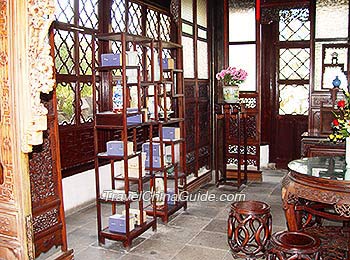 |
| Bookshelf of the Ming Dynasty |
Representing the zenith of Chinese furniture, Ming furniture is treasured for its precious wood, comfortable design, simple decoration and superb craftsmanship.
Background
Cultural Features
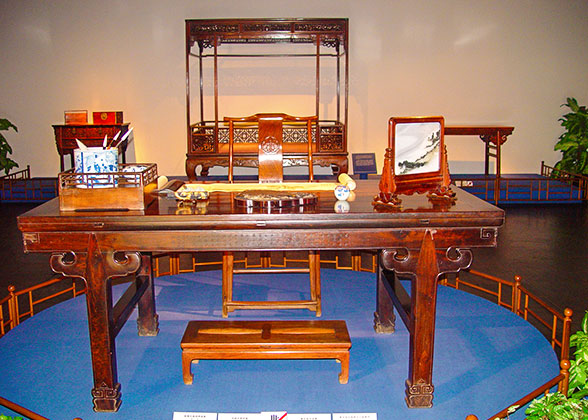 |
| Desk, Ming Dynasty, Shanghai Museum |
Scholars' participation substantially influenced the development of furniture. The ancient hierarchical tradition required scholars to pursue spiritual goals and to not get involved in craftsmanship. However, Ming Dynasty scholars differentiated from their counterparts in previous dynasties not by bizarre dress, but by their novel interest in furniture design, which helped it throw off rigidity and develop cultural meaning. In addition, references to furniture by scholars leave us valuable information.
The scholars' aesthetics helped Ming furniture follow an elegant and natural taste. The scholars grasped the essence of "less is more." Decoration for decoration's sake was a lowbrow skill. In quality furniture, the texture of wood was fully used to reveal natural beauty. Simple design had nothing to do with cheapness; red sandalwood and scented rosewood represented essential value. Scholars had their special interests and preferences. Small tables, vases, bibelots and incense burners created an elegant atmosphere.
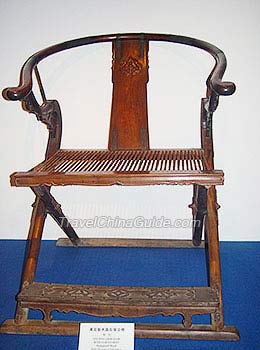 |
| Folding Armchair, Ming Dynasty |
Cupboards for books and antiques varied in size and style. A table for a qin, a seven-stringed plucked instrument, had a crystal cover with a tin pool under it. In this tin pool, fish swam in floating grass as though they were a dance band.
Even a bed was not just for sleeping. An adjustable bed made of cane should be light enough to be moved around. A backrest was a must so a scholar could either read books or enjoy the beautiful scenery among trees and flowers. A bed made of wood and bamboo from Hunan was for naps so the scholar could visit Dongting Lake in his dream!
Handwritings and paintings by well-known calligraphers and painters were engraved in desks and chairs, increasing the artistic and aesthetic value of the furniture. Zhou Tianqiu, a Ming calligraphy master, was so fond of his red sandalwood chair that he wrote on the backrest, 'sitting on this chair, I feel one day is worth two days. If I live for 70 years, it would be worth 140 years.'
Ming furniture features durable and precious woods such as red sandalwood and scented rose wood, which. emit pleasant aromas, naturally adding a touch of taste and grace. Simple structure and minimal decoration set off the natural beauty of the wood. This meaningful simplicity was achieved without sacrificing comfort. Scientific protection for bodily form was reflected in details such as curves, lines, height, and size.
Chinese traditional culture emphasizes the positive interplay between nature and human beings. Applying ideas from Zen and Tao, scholars and craftsmen devoted their wisdom and passion to reflecting this golden rule in furniture, creating the Golden Time of classical furniture.
Qing Furniture
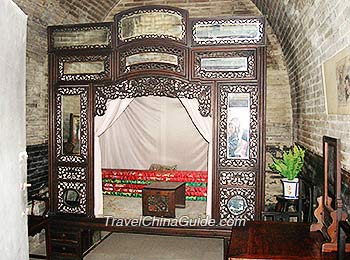 |
| Bed, Qing Dynasty, Wang's Compound, Pingyao |
Engraving was a popular and important means of furniture decoration. The subjects range from auspicious character patterns, to geometric patterns and scenes in nature with animals, mountains and waters, flowers and grass. Color painting, especially gold painting, was widely used.
Furniture-Making Centers
In the Forbidden City in Beijing (Jing for short), the best craftsmen used the choicest wood to make Jing-styled furniture under the guidance of the emperors.
Furniture made in Guangdong (Guang for short) shows the influence of Western art. In contrast to the Su-style, Guang-style is unstinting in the use of material, and the furniture looks solid and massive. The Ancestral Temple of the Chen Family in Guangzhou has a display of Guang-styled furniture.
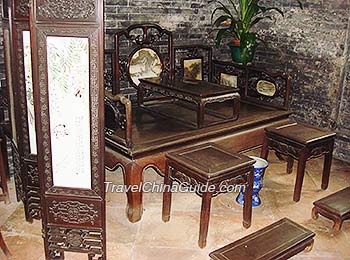 |
| Canton styled furniture, Qing Dynasty |
Furniture made in Shanxi (Jin for short) is a harmonious blending of royal demeanor and local cultural heritage. Shanxi was one of the richest places in China during the Qing Dynasty, of which Rishengchang Exchange Shop in Pingyao, the earliest bank in China, is good evidence.
With the increasing importance of Jin merchants, commercial symbols emerged, such as patterns concerning money and fortune. Unlike other styles, Jin-style has less engraving; instead, inlays of stone, porcelain and bone, which catch the eye more easily than exquisite engraving, are used to tell of the luxurious lifestyle of the owner. In addition, color and gold painting become the vogue depicting the preference for gaudiness by the wealthy. Another feature of Jin-styled furniture is the widely applied walnut wood.
The ancient Ming and Qing Streets, Qiao Family Compound and Wang's Compound in Pingyao, Shanxi, provide a sufficient testimony to the aesthetic and cultural achievement in Jin-style furniture. Chinese Ming and Qing Furniture Gallery of Shanghai Museum is an ideal place to appreciate various styles of classical furniture. China Red Sandalwood Museum in Beijing shows over ten pieces of precious red sandalwood furniture in Qing and Ming Style.
In the past 20 years, Ming and Qing furniture has enjoyed an elevated reputation as art and as investment, and its value is increasing.
The World’s Largest Huanghuali Wood Wardrobe in Forbidden City